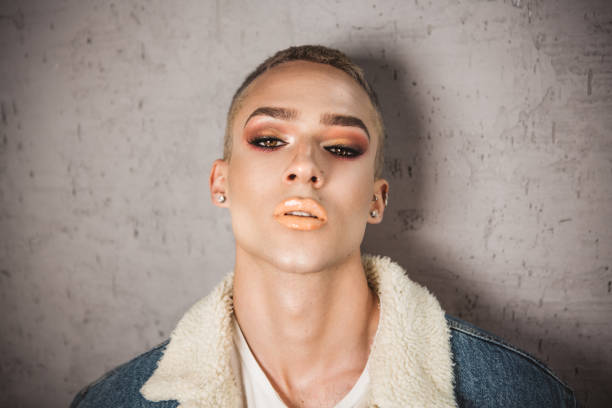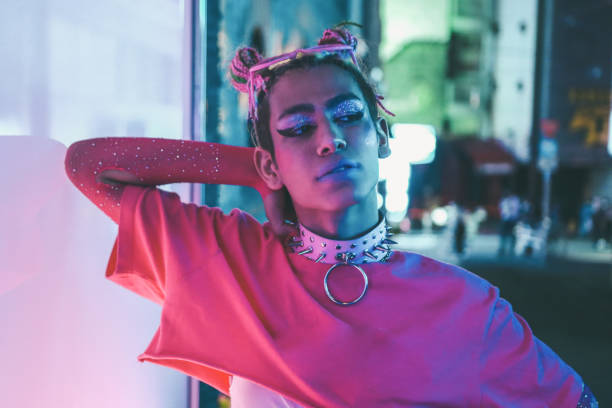In recent years, gender-fluid fashion has become a transformative force in the industry, breaking traditional binary norms and allowing for more self-expression. This movement towards inclusivity and diversity has redefined how we perceive clothing and style. In this article, we will explore the emergence of gender-fluid fashion, its impact on society, and the pioneers leading this revolutionary change.
The Concept of Gender-Fluid Fashion

Gender-fluid fashion refers to clothing and accessories that are not specifically designed for one gender, allowing individuals to choose attire that reflects their personality rather than conforming to societal expectations. This concept challenges the traditional binary notion of ‘male’ and ‘female’ clothing and opens up a spectrum of possibilities. Brands are increasingly embracing this trend, offering unisex collections that appeal to a broader audience. By promoting inclusivity, gender-fluid fashion helps dismantle stereotypes and create an environment where everyone feels represented and accepted.
The History and Evolution of Gender-Fluid Fashion
While gender-fluid fashion may seem like a contemporary phenomenon, its roots trace back several decades. Iconic figures such as David Bowie, Prince, and Grace Jones have historically blurred gender lines with their bold style choices. The LGBTQ+ movements of the early 20th century also played a significant role in challenging rigid gender norms. However, it wasn’t until the late 2010s that gender-fluid fashion gained mainstream recognition. Social media platforms and influential public figures have further accelerated this movement, making it more accessible and widely accepted.
Impact on the Fashion Industry
The rise of gender-fluid fashion has compelled the industry to rethink design, marketing, and retail strategies. Designers are creating versatile pieces that can be worn by anyone, regardless of gender. This shift has also led to an increase in the use of non-gendered mannequins and diverse models in fashion campaigns. Retailers are restructuring their stores to feature gender-neutral sections, providing a more inclusive shopping experience. This change not only benefits the consumer but also encourages brands to innovate and stay relevant in an ever-evolving market.
Key Figures and Brands in Gender-Fluid Fashion
Several key figures and brands have been instrumental in promoting gender-fluid fashion. Designers like Harris Reed and Telfar Clemens are known for their avant-garde, gender-neutral collections. Major brands such as Gucci, Thom Browne, and Zara have also launched unisex lines that cater to a diverse clientele. These pioneers are not just creating clothing; they are fostering a movement that transcends fashion, challenging societal norms and encouraging individuality.
The Future of Gender-Fluid Fashion
As society continues to embrace diversity and self-expression, the future of gender-fluid fashion looks promising. With growing support from both consumers and industry leaders, we can expect to see more inclusive collections and innovative designs. Moreover, educational initiatives and awareness campaigns will further promote understanding and acceptance of gender-fluid identities. This progressive shift signifies not just a trend, but a permanent transformation in how we perceive fashion and identity.
Conclusion
The rise of gender-fluid fashion represents a significant cultural shift, promoting inclusivity, diversity, and self-expression. As it continues to gain momentum, this movement challenges traditional norms and provides a platform for everyone to feel seen and valued. Whether through versatile designs, diverse marketing strategies, or pioneering figures, gender-fluid fashion is here to stay, reshaping the industry and society for the better.
FAQs
What is gender-fluid fashion?
Gender-fluid fashion refers to clothing and accessories designed without specific gender norms in mind, allowing individuals to express themselves freely regardless of gender.
Why is gender-fluid fashion important?
Gender-fluid fashion is important because it promotes inclusivity, breaks down traditional stereotypes, and allows people to express their identity authentically.
Are there any well-known brands that offer gender-fluid clothing?
Yes, several well-known brands such as Gucci, Thom Browne, and Zara have launched unisex lines that cater to a diverse audience.
Social media has played a crucial role in popularizing gender-fluid fashion by providing a platform for influencers and public figures to showcase their unique styles and challenge traditional norms.
What does the future hold for gender-fluid fashion?
The future of gender-fluid fashion looks promising, with increasing support from consumers and industry leaders. We can expect more inclusive collections and innovative designs that celebrate diversity and self-expression.
